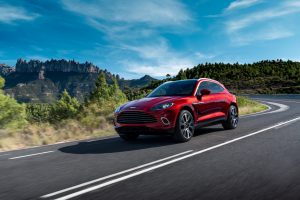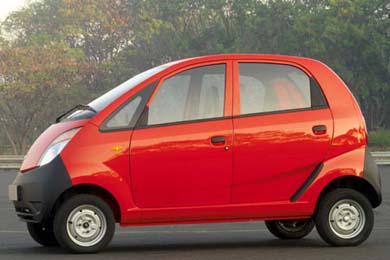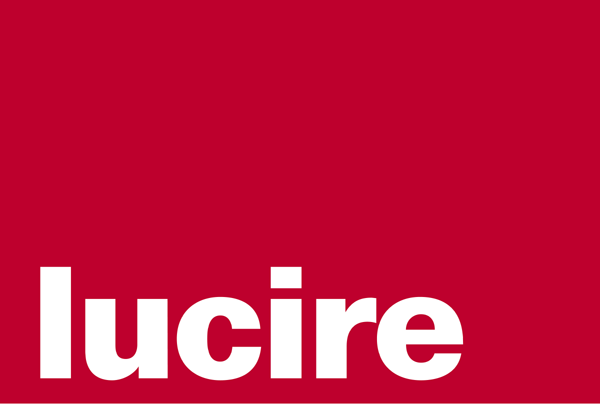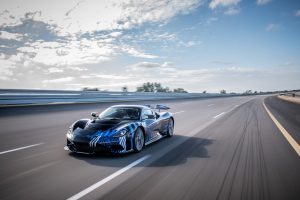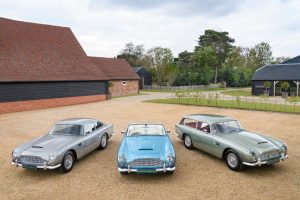We get a lot of information about press conferences and at the Salon de Genève, we have been seeing them come in thick and fast. Renault, Volkswagen, BMW, etc. But the most intriguing was for a brand I never expected to see in an email: Lagonda.
Lagonda is a brand that celebrates its centenary this year—though it has not enjoyed continuous production over the last 100 years. Somewhere during its history, David Brown bought the company to complement his other acquisition, Aston Martin, and for many of us Lagonda typically adorned four-door versions of Aston cars.
These were low-slung motorway expresses, and the last cars to bear the name, if you do not count show cars, were converted versions of the Aston Martin Virage around 1993, which had Lagonda badges.
But when the Aston Martin Rapide—the four-door version of the DB9—made its début, Aston boss Dr Ulrich Bez said it would not wear a Lagonda badge.
This week, at Genève, we saw why: the group had very different ambitions for the marque.
The vehicle that was shown is the opposite to what I expected from Lagonda: it is a chunky, high four-seat four-door with four-wheel drive.
It’s too early to tell what will happen. Many years ago, the majority of commentators outright dismissed the Porsche Cayenne, saying the SUV betrayed the brand’s values. I was in a minority who went on record to say that the car would be a hit. It was, and Porsche’s core sports cars’ reputation remains intact.
But the Cayenne was a brand extension. We are talking about reintroducing a brand that has not been on a production car since 1990, kept alive only in the hearts of certain people.
The obvious argument against the new Lagonda Concept, if it makes production, is: does the world need a new SUV?
Assuming it isn’t an SUV—no one mentioned the term at Genève, after all—the second argument is: haven’t we had all the crossovers we can handle?
Lagonda is betting on several things. First, that it will create a new segment of luxury vehicles without competing with the likes of Rolls-Royce and Maybach. Others would be too tied to their heritages and Lagonda has the opportunity to reinvent itself specifically for the needs of a rich clientèle. Secondly, that regardless of a recession, a luxury niche will always be around—and it has launched its 1976 saloon during a recession that went on to do rather well in the Middle East. (Never mind the first one did not appear off the production line for another two years.)
The press release reads, ‘“The Lagonda is the luxury car of the future,” says Aston Martin Lagonda Chief Executive, Dr Ulrich Bez, “a combination of total usability, a new form and innovative new technology and materials.”
‘Lagonda is committed to innovative new propulsion technologies, new materials and elegant forms, creating a functional luxury for the near future. Critically, the brand will allow the exploration of alternative powertrain solutions including flexfuel, low emission diesel and hybrid systems. Lagonda will epitomize the intersection of craft, design and technology with Aston Martin’s established high performance expertise.’
This is not unheard of. Within the Ford group, when Aston Martin Lagonda was within Dearborn’s ownership, there was an intent for the company to be the test-bed for the latest technologies. What has happened is that this will has been transferred to Lagonda first.
The Lagonda Vignale show car of 1993, styled by Moray Callum (brother of Ian Callum, head of Jaguar design) was not a low-slung vehicle, and given its positive reception at the time—when Aston announced it would be the first division in the Ford group to get the latest technologies—the company may have felt that a modern reinterpretation was not without merit.
We have a few doubts. The Vignale had a sense of elegance to it, which the Lagonda Concept does not. This is, of course, subjective.
Given Lagonda’s backers in the Middle East, the company may well have some market research among potential clients that say a future production version of the Concept will fly. And the fact that Dr Bez, at the press conference, mentioned Russia first, is significant. There is, among a certain segment of the population, a market for butch-looking, inelegant large cars.
Essentially: just because the Concept looks like a behemoth to occidental eyes—and even my oriental ones—doesn’t mean it won’t go down well in Bez’s stated export markets of ‘Russia … emerging markets in the Middle East, South America, India and China.’ Only if things go well (this is what Aston Martin Lagonda probably means by ‘as well as responding to demand from the dynamic, innovation-focused consumers’ that it mentions afterwards) will it head to ‘Europe, North America and the Far East.’ These aren’t priority markets.
He continued, ‘The intention is for Lagonda to enter the market place with a unique performance avant-garde luxury product, a vehicle that combines exceptional ability with unsurpassed elegance, inside and out. … Lagonda will create a new kind of customer relationship, instilling the spirit of travel, adventure and style into a single, formidable package.’
It will all be in the way Lagonda brands itself, and rich brands like this never got to where they were by being socially responsible. And that may well be why you won’t see this in next year’s Lucire Car to Be Seen in shortlist.
Since it’s not uncommon to see Lagondas with production runs of seven, the company is not expecting to sell a lot of cars. With the prices that they are likely to command—prices which will make an Aston Martin seem cheap—they will probably make a profit, too.
It’s not what we’re about—but somehow Aston Martin Lagonda’s shareholders might not complain.

